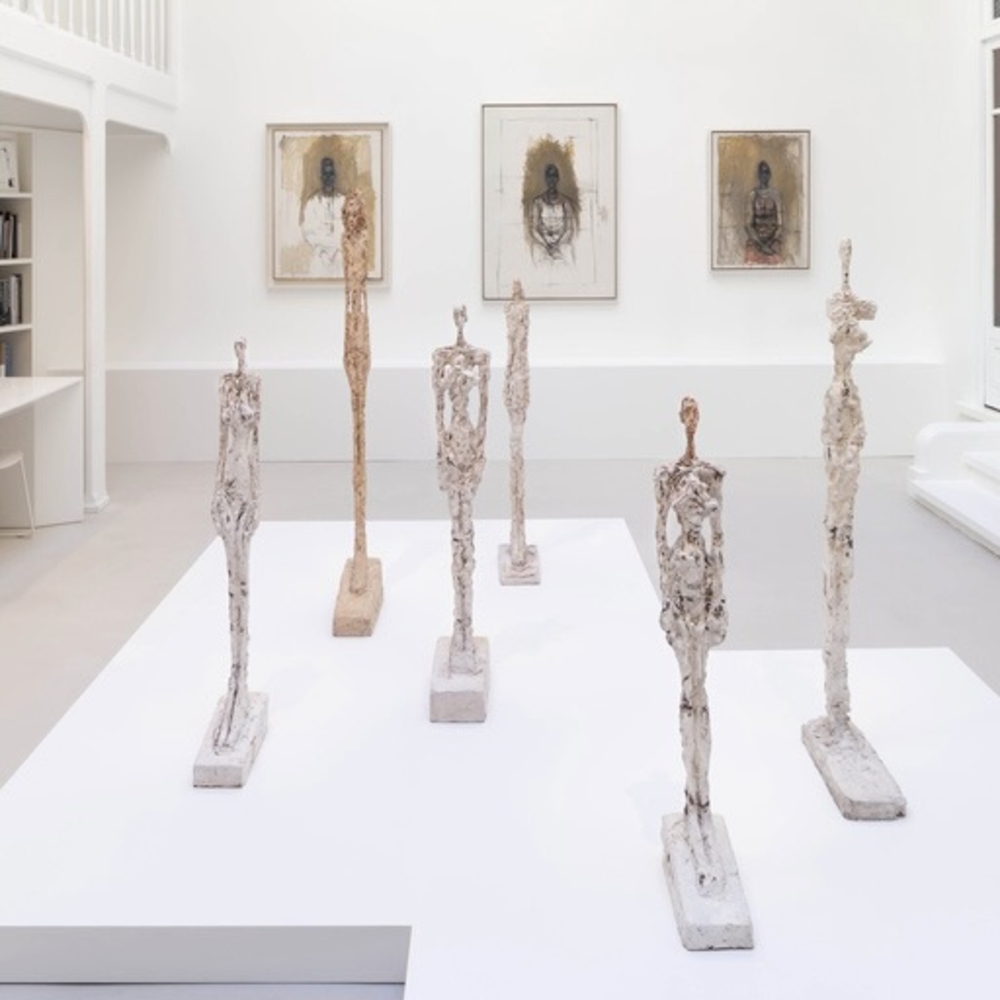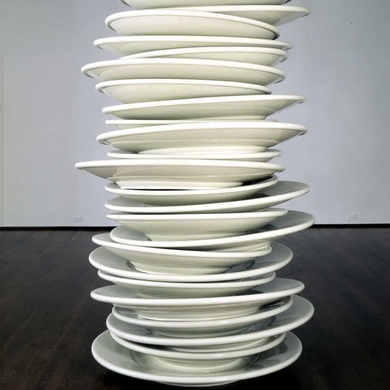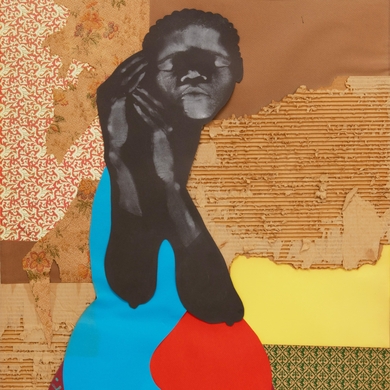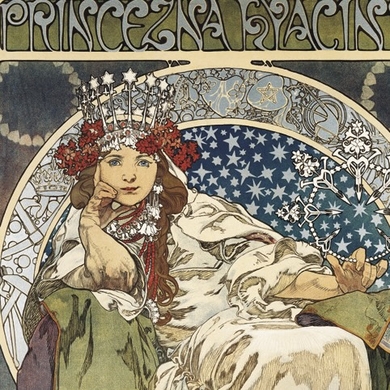In the late 1920s, Alberto Giacometti was living on rue Hippolyte-Maindron, in a 247-square-foot apartment with an earthen floor and a small iron stove. It was at that time that he met André Breton and the Surrealist artists; he would be part of the movement from 1930 to 1935. Suspended Ball (1930–31)—a plaster sculpture of a sphere with a cleft and a crescent moon just under it—marked Giacometti’s entrance into the group. A peach and a banana? A woman and a man? Forms and space? A nocturne? Soon came the Second World War and with it the thin bronze sculptures of haunted human figures that brought Giacometti world renown. Later, the artist would paint plasters, to breathe life into his figures. “Not to talk of painted sculptures,” he told his gallerist, Pierre Matisse, in 1950, “the colour is part of the sculpture, [the sculptures] are painted with oil like the paintings.” For the first time, the Insititut Giacometti is presenting the majority of the painted plasters in its holdings. —Elena Clavarino
Arts Intel Report
Alberto Giacometti: Not to Talk of Painted Sculptures

Installation view of “Alberto Giacometti: Not to Talk of Painted Sculptures,” 2024.
When
Aug 29 – Nov 3, 2024
Where
Etc
Photo: © Succession Alberto Giacometti / ADAGP, Paris, 2024



